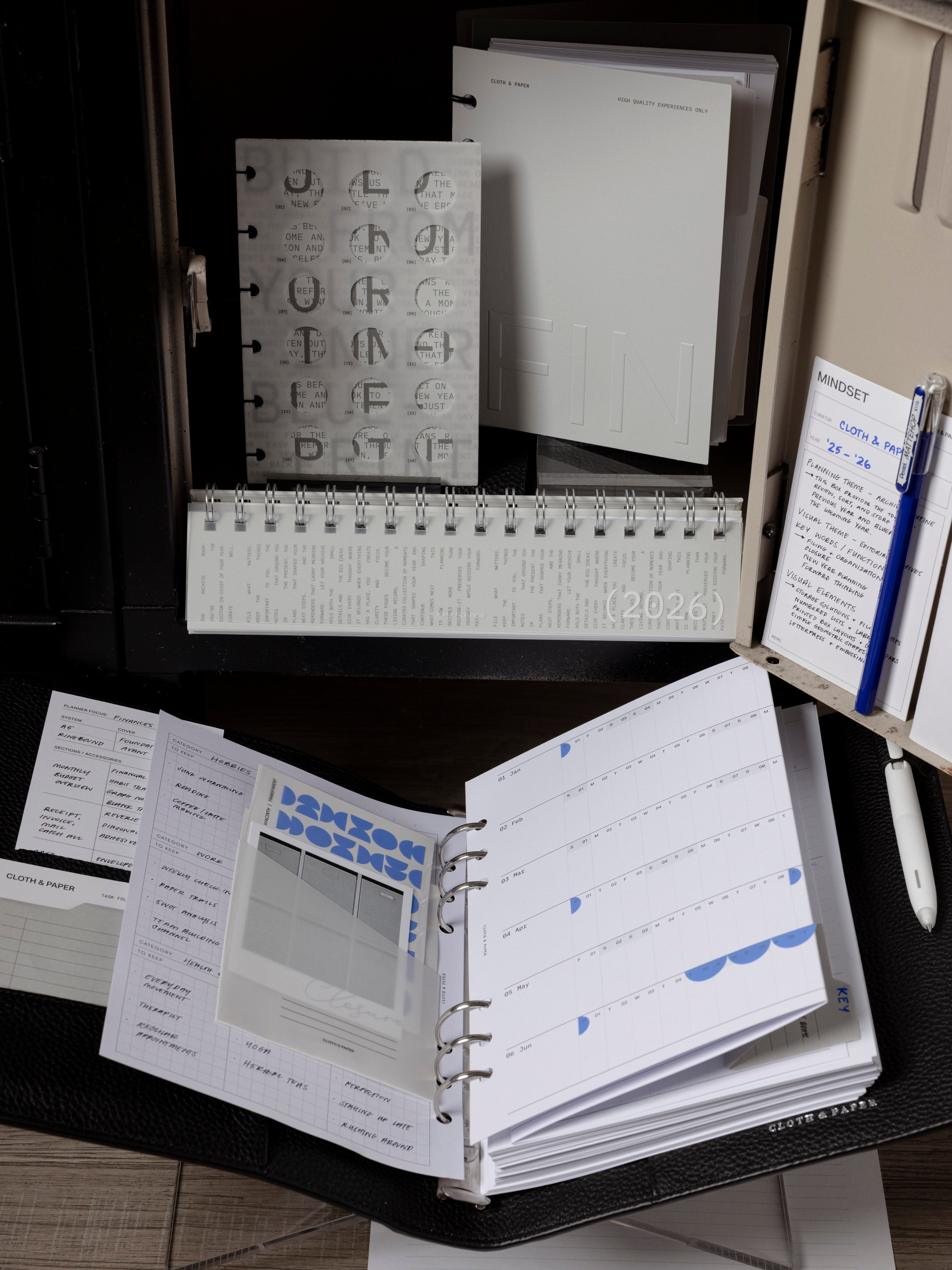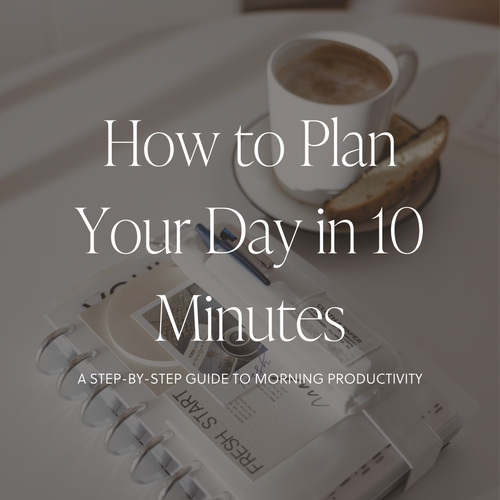6 Effective Strategies for Tracking Your Fitness and Wellness Goals in Your Planner
Life is full of opportunities and being physically and mentally prepared can make all the difference when they come your way. Whether it's an adventurous trip, a new career challenge, or simply the chance to feel your best every day, maintaining your fitness and wellness goals ensures you're always ready to seize the moment.
Your planner can be the secret weapon in this readiness. This week, we’ll guide you through six effective strategies for tracking your fitness and wellness goals in your planner. These tips are designed to fit seamlessly into your routine, helping you build sustainable habits without the overwhelm. With these strategies, you’ll be able to stay consistent, adaptable, and ready for whatever life throws at you.
-
Track Energy, Not Just Activities
Tracking how your activities make you feel can unlock valuable insights. Use the blank section of your planner to capture how your body responds after a workout or meal. For example, write something like “Felt strong and energized after morning yoga” or “Relaxed after a light dinner.” In the graph section, rate your energy on a scale of 1 to 10 throughout the day, or use emojis for a quick snapshot of your mood.
This practice uncovers patterns. If morning workouts leave you feeling focused and productive while late-night sessions disrupt your sleep, you’ll know it’s time to adjust. Let tracking guide your fitness and wellness routines to align with your body’s natural rhythms.
-
Plan for Flexibility
Life doesn’t always go as planned, and that’s okay. Instead of letting a missed workout derail your progress, use a “Catch-Up Options” section in your planner. Jot down specific alternatives: if you miss a run, go for a brisk 30-minute walk; if you skip yoga class, try a quick home session with a YouTube video.
Including a “buffer day” in your weekly schedule for catch-ups or rest adds extra breathing room. Writing down these options takes the pressure off and keeps the focus on progress, not perfection. When your week goes as planned, use the space to celebrate your success by jotting a positive note or reward yourself.

-
Simplify Meal Tracking for Consistency
Describing your meals with keywords can make tracking simple and stress-free. Write down one word per meal that captures its essence— “nourishing” for a balanced lunch, “indulgent” for a treat, or “energizing” for a protein-packed snack. In the graph section, tally how often each type appears during the week.
This approach eases any stress while still encouraging mindful choices that help you build a better relationship with food. It’s simple, actionable, and sustainable—perfect for creating healthy eating habits without unnecessary trouble.
-
The One-Task Rule
Staying consistent with fitness doesn’t have to be overwhelming. Instead of trying to fit in a full workout every day, commit to just one simple action that’s easy to accomplish. Whether it’s doing 10 pushups, stretching your hamstrings for two minutes, or adding a veggie to your lunch, choose something that feels doable. Write it down in your planner with the Focus Planner Inserts and highlight it at the top of your daily plan. Once you’ve completed it, check it off—it’s that simple.
This approach works because small, realistic actions cut down on decision fatigue and build consistency. It’s not about perfection; it’s about making steady progress, one small step at a time.
5. Track Recovery Metrics
Your recovery is just as crucial as your workouts, so it’s important to pay attention to how well you’re resting. Use the graph section of your planner to log key metrics like your sleep hours or resting heart rate.
Pair these numbers with a few notes in the blank section about what might have influenced your recovery—maybe you had caffeine late in the day, or perhaps you hydrated really well and felt more rested. This simple tracking method helps you connect the dots between your habits and your recovery, giving you a chance to make adjustments that will enhance your performance over time.
6. Plan Movement, Not Just Workouts
On the days when finding time for a full workout feels impossible, try scheduling “movement moments” right into your routine. These are simple actions that sneak in some activity throughout your day, like taking the stairs instead of the elevator, doing a set of squats every time you get up from your desk, or stretching your shoulders while brushing your teeth.
Write these small tasks in your planner and use the graph area to track how consistently you follow through. You can use the Routine Builder Planner Inserts for this purpose. This method works because it lets you stay active without carving out extra time or overwhelming your schedule—just a few mindful moments of movement can make a big difference.
Wellness Is Within Reach
Building mindful and healthy habits into your routine can truly transform how you feel, both physically and mentally. By making choices and staying present, you're able to reduce stress, boost your mood, and find a better balance in everyday life. Small practices like mindful eating, setting consistent routines, or taking a few moments for meditation can help improve your sleep, enhance your mental fitness, and bring a sense of calm to your day.
When you prioritize your well-being this way, you’re not just improving your fitness—you’re building emotional resilience, too. And with a little mindfulness woven into your habits, you’re setting yourself up for a healthier, more fulfilling life.
Ready to feel your best? Take action today to create a life of balance and wellness, starting with a single mindful habit.









Dejar un comentario
Este sitio está protegido por hCaptcha y se aplican la Política de privacidad de hCaptcha y los Términos del servicio.